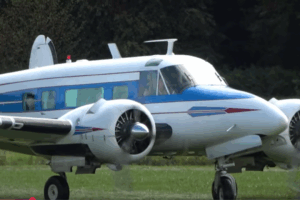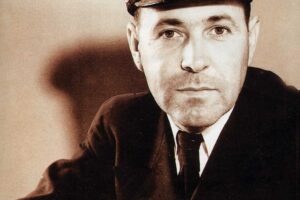British South American Airways , a state-run airline operating in the mid-20th century, became synonymous with aviation mysteries due to the unexplained disappearances of two of its aircraft: the Avro Lancastrian “Star Dust” in 1947 and the Avro Tudor IV “Star Tiger” in 1948. These incidents have captivated historians and aviation enthusiasts for decades, leading to extensive investigations and numerous theories.
On August 2, 1947, “Star Dust” embarked on a routine flight from Buenos Aires, Argentina, to Santiago, Chile. The crew, led by Captain Reginald Cook, included First Officer Norman Cook, Second Officer Donald Checklin, Radio Operator Dennis Harmer, and Stewardess Iris Evans. The six passengers comprised a mix of British nationals and foreign citizens. Approximately 15 minutes before the scheduled arrival, the crew sent a Morse code message to Santiago Airport, stating: “ETA SANTIAGO 17.45 HRS STENDEC.” The term “STENDEC” was unfamiliar to the radio operator, who requested a repeat transmission. However, the aircraft failed to arrive, and an extensive search yielded no trace of the plane or its occupants. It wasn’t until 1998 that climbers discovered wreckage on Mount Tupungato in Argentina’s Andes Mountains, confirming the aircraft’s fate. The meaning of “STENDEC” remains a subject of speculation.
Less than a year later, on January 30, 1948, “Star Tiger,” an Avro Tudor IV, departed from Santa Maria in the Azores en route to Bermuda. The aircraft, piloted by Captain John Clutha McPhee, carried 25 passengers and six crew members. Approximately 12 hours into the flight, the crew lost radio contact, and the plane vanished without a trace. Despite a massive search operation involving over 70 planes and ships, no wreckage or bodies were found. The disappearance of “Star Tiger,” coupled with the earlier loss of “Star Dust,” fueled speculation about the Bermuda Triangle, a region notorious for unexplained disappearances.
The disappearances of these two BSAA aircraft have been subjects of numerous theories. Some suggest mechanical failures, while others propose sabotage or even extraterrestrial involvement. However, no conclusive evidence has ever been presented to support any of these claims. The incidents have left a lasting impact on aviation history, highlighting the challenges of early long-distance air travel and the mysteries that can arise.
In the aftermath of these tragedies, BSAA faced significant challenges. The loss of two aircraft in such a short period led to a decline in public confidence. The airline eventually merged with the British Overseas Airways Corporation in 1949, ceasing to exist as an independent entity. The legacy of “Star Dust” and “Star Tiger” continues to intrigue and mystify, serving as poignant reminders of the uncertainties inherent in the early days of aviation.
The stories of these lost planes have been recounted in various documentaries, books, and articles, each offering different perspectives and insights. While the exact causes of their disappearances may never be fully understood, they remain emblematic of the enduring allure and enigma of aviation history.




